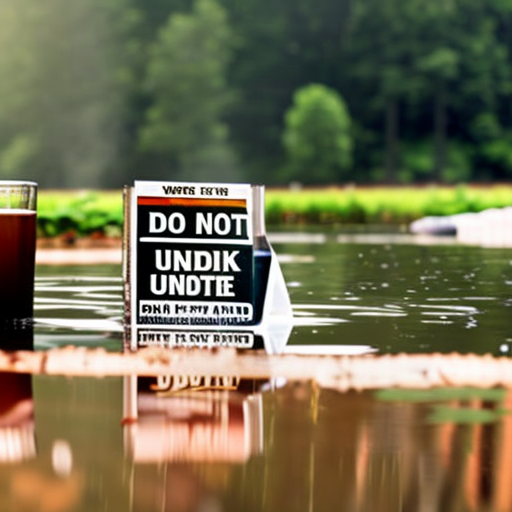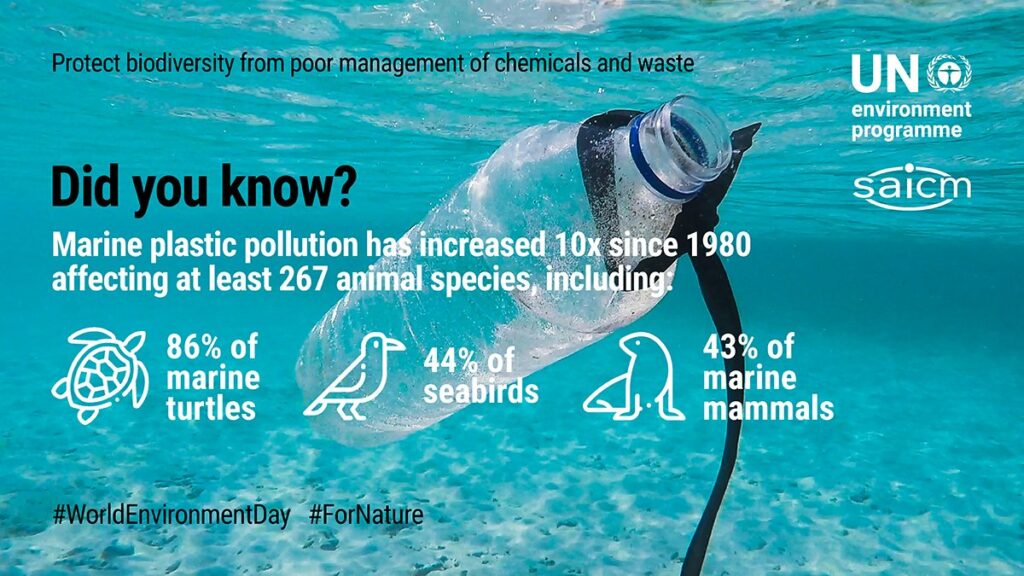
Many Vermont Communities Recovering from Catastrophic Floods
Many communities across Vermont are now recovering from recent catastrophic floods — but some of them remain without basic resources.
In the Windsor County town of Woodstock, a swollen Ottauquechee River produced significant problems for the local water system, forcing people there to navigate a “do not drink” notice. It’s the only municipality in the state where residents can’t at least boil water before drinking, according to the Federal Emergency Management Agency.
Reporter Frances Mize Discusses Woodstock’s Water System Issues
Reporter Frances Mize has been following this story for the Valley News. She joined Vermont Public’s Jenn Jarecki to discuss the latest. Their conversation below has been edited and condensed for clarity.
Jenn Jarecki: As I mentioned at the top, Woodstock residents can’t drink their water nor can they use it to cook or wash dishes, even if it’s boiled. But there was a less restrictive boil notice in place immediately after the flooding. Can you describe the initial damage to Woodstock’s water system, and then share what happened that led to the complete do not drink notice that’s in place now?

Frances Mize: Woodstock went on a boil notice last Monday as flooding started to eat up the town and interfered with the Woodstock Aqueduct Company’s water system. Woodstock Aqueduct supplies water to 800 residents and businesses in town and runs from east to west Woodstock. Starting Monday, residents had to boil their water for 60 seconds in order to drink it, and most people resort to bottled water. But then on Friday, the notice was updated to a “do not drink” order.
There was concern that the fire hoses that were run from hydrant to hydrant to restore pressure to the system on Monday weren’t certified as safe for drinking water. The state’s Department of Environmental Conservation was also concerned that the hoses contained PFAS, also known as forever chemicals. It’s a harmful compound of chemicals that can have a series of lasting impacts on the human body. It’s found in a wide range of regularly used human objects, including fire hoses. Especially fire hoses, actually. So, the “do not drink” notice will remain in effect until it’s determined that the water system has resumed normal operation and they’ve collected water quality samples that demonstrate the water is safe to drink.
Additionally, Tuesday, the National Guard, which has been distributing drinking water throughout Vermont since the flooding, also agreed to assist in bringing the Woodstock Aqueduct Company a long pipe that it needed for repairs to the system from Springfield, Massachusetts. But there was a transportation snafu and the pipe ended up getting cut in half — meaning that connecting the pipes will take twice as long as usual. So that pushed their schedule back a day or so.
Royalton’s Water Issues
Nearby Royalton is also dealing with its own water issues. Can you tell us about the situation there?
Royalton is one of the only towns in the state to rely on a river, and they use the White River as their primary source of municipal drinking water. As floodwaters decreased water quality in the White River, suspended sediment and other debris in the river increased — a criteria known as the river’s turbidity. The Royalton wastewater management system has been struggling since then to sort of come up with the magic level of chlorination that makes that water, which has been impeded by flood debris, safe to drink as well. So Royalton is on a boil notice.
Woodstock Residents Coping with Difficulties
Based on your reporting, Francis, can you help us better understand what Woodstock residents are going through right now? How are they dealing with these difficulties on top of all the other work needed to recover from the flooding?
I spoke with Deanna Jones, who is the executive director of the Thompson Senior Center in Woodstock. She said that the “do not drink” order had really interrupted operations there. They serve lunch there every day, and now they’re having to do that on paper plates out of the parking lot at the Saskadena Six ski resort in neighboring Pomfret, which is owned by the Woodstock Inn and Resort. And they’ve also moved their Meals on Wheels production to the kitchen in the lodge there at Saskadena Six.
In the meantime, the swimming pool at the Woodstock Recreation Center is open, but the showers are closed. Rising water levels last week also severely flooded a secondary building there at the Recreation Center. I think they were inundated with 3 to 4 feet of water. And people have been banging on their door wanting to shower there because of their water access. But so far, the Woodstock Recreation Center hasn’t been able to open up to users beyond the pool, which is actually still open.
Repairs and Future Plans for Woodstock
The Valley News reported that pipe repairs could be finished a couple hours after we record this, Francis, on Wednesday. Can you break down those repairs for us and then share what’s next for Woodstock?
I’m not totally sure about the logistics of those pipe repairs. But once they are completed, hopefully by the end of Wednesday, then the Woodstock Aqueduct Company will send water samples off to a lab on Thursday. And if those samples are in the clear for chlorine and bacteria levels in the samples, that will hopefully be returned on Friday. Then Woodstock will hopefully get its water back.
Have questions, comments or tips? Send us a message.
Flood Safety and Other Key Resources
SDGs, Targets, and Indicators
-
SDG 6: Clean Water and Sanitation
- Target 6.1: By 2030, achieve universal and equitable access to safe and affordable drinking water for all.
- Indicator 6.1.1: Proportion of population using safely managed drinking water services.
-
SDG 11: Sustainable Cities and Communities
- Target 11.5: By 2030, significantly reduce the number of deaths and the number of people affected and substantially decrease the direct economic losses relative to global gross domestic product caused by disasters, including water-related disasters, with a focus on protecting the poor and people in vulnerable situations.
- Indicator 11.5.1: Number of deaths, missing persons, and directly affected persons attributed to disasters per 100,000 population.
Analysis
-
SDG 6: Clean Water and Sanitation
The article highlights the issues faced by the town of Woodstock in Vermont due to the flooding of the Ottauquechee River. The flooding has caused damage to the local water system, leading to a “do not drink” notice for the residents. This directly relates to SDG 6, which aims to ensure access to clean water and sanitation for all. The target under this SDG that can be identified is Target 6.1, which aims to achieve universal and equitable access to safe and affordable drinking water for all.
The indicator mentioned in the article is Indicator 6.1.1, which measures the proportion of the population using safely managed drinking water services. The article mentions that residents had to resort to boiling water or using bottled water due to the contamination of the water system.
-
SDG 11: Sustainable Cities and Communities
The article also mentions the town of Royalton, which is dealing with its own water issues due to the flooding. The town relies on the White River as its primary source of municipal drinking water, but the floodwaters have decreased water quality, leading to a boil notice. This relates to SDG 11, which focuses on creating sustainable cities and communities. The specific target under this SDG that can be identified is Target 11.5, which aims to reduce the number of deaths and people affected by disasters, including water-related disasters.
The indicator mentioned in the article is Indicator 11.5.1, which measures the number of deaths, missing persons, and directly affected persons attributed to disasters per 100,000 population. The article mentions that Royalton is on a boil notice due to the decrease in water quality caused by the floodwaters.
Table: SDGs, Targets, and Indicators
| SDGs | Targets | Indicators |
|---|---|---|
| SDG 6: Clean Water and Sanitation | Target 6.1: By 2030, achieve universal and equitable access to safe and affordable drinking water for all. | Indicator 6.1.1: Proportion of population using safely managed drinking water services. |
| SDG 11: Sustainable Cities and Communities | Target 11.5: By 2030, significantly reduce the number of deaths and the number of people affected and substantially decrease the direct economic losses relative to global gross domestic product caused by disasters, including water-related disasters, with a focus on protecting the poor and people in vulnerable situations. | Indicator 11.5.1: Number of deaths, missing persons, and directly affected persons attributed to disasters per 100,000 population. |
Behold! This splendid article springs forth from the wellspring of knowledge, shaped by a wondrous proprietary AI technology that delved into a vast ocean of data, illuminating the path towards the Sustainable Development Goals. Remember that all rights are reserved by SDG Investors LLC, empowering us to champion progress together.
Source: vermontpublic.org

Join us, as fellow seekers of change, on a transformative journey at https://sdgtalks.ai/welcome, where you can become a member and actively contribute to shaping a brighter future.






